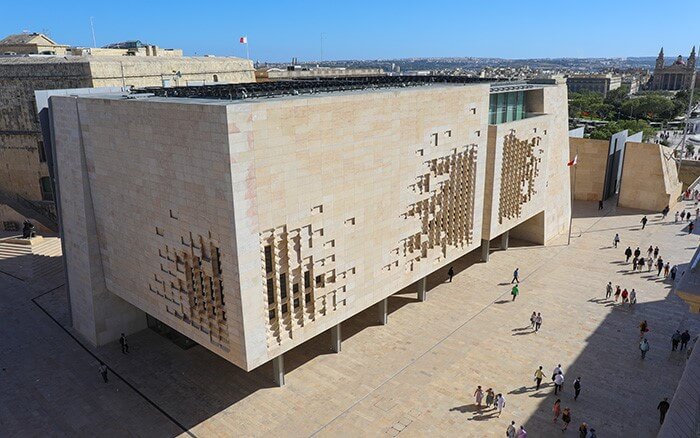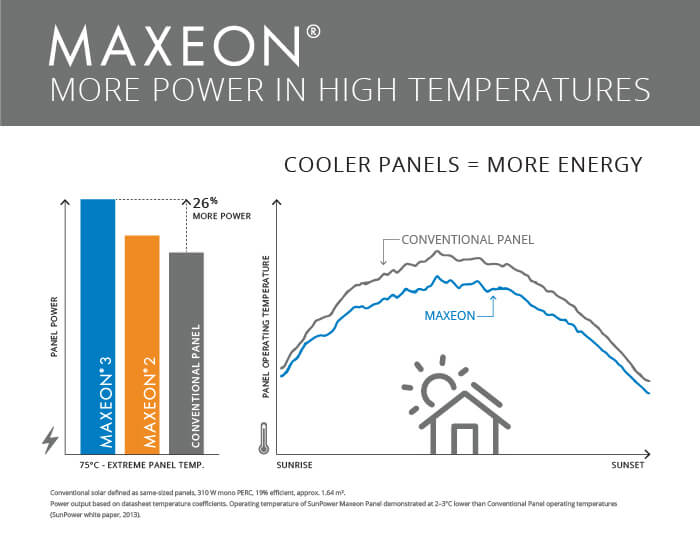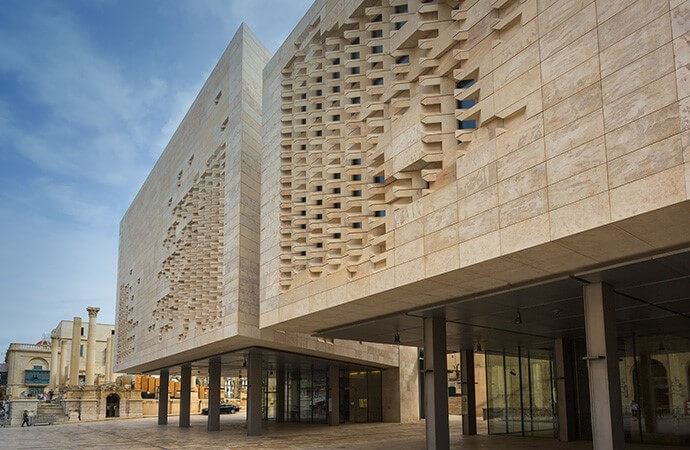
Malta Part 2: Solar that Stays Cooler as the Planet Heats
The Maltese Islands are known for white limestone cliffs, iconic architecture and a blissfully hot, sunny climate. What they’re not yet known for, ironically, is solar energy.
In a place that’s perfect for solar, Malta is racing to meet its EU target of 10 percent renewables by 2020, partially due to a severely limited space. Rooftop solar in the densely populated capital of Valletta can also be hindered by shade from other buildings or roof obstructions.
So when the Maltese government was exploring alternatives for a rooftop solar system on its new parliament building, performance was paramount. Designed by renowned architect Renzo Piano, the understated, flat-roofed building is as much symbol as edifice. It replaces the much more ornately designed parliament building that stood at the centre of the capital city for centuries: “Perhaps the building’s understatement is deliberate – a desire to flatten hierarchies between the people and their representatives,” mused one architectural reviewer.

Malta’s Parliament Building, designed by Renzo Piano Building Workshop, is the entrance to Malta’s capital city of Valletta. The rooftop solar design maximises energy with a minimal profile, retaining focus on the building itself.
Any solar installed on the parliament’s roof had to meet several objectives: It must partially offset the building’s considerable energy needs; it must be as efficient as possible so as not to take up the entire roof; and it must withstand extremely high temperatures day after day, without significant loss in performance.
“Apart from servicing the energy needs of the parliament building, the system needed to be aesthetically pleasing, invisible from the ground, and an integral part of the architecture itself,” said Mario Cachia, CEO of Alternative Technologies Ltd., a SunPower partner.
In a hot climate like Malta’s, a low temperature coefficient combined with high efficiency is the proverbial solar win-win. By the laws of thermodynamics, solar panels convert sunlight into either energy or heat. Higher efficiency panels generate more energy and therefore less heat, thereby running cooler. SunPower panels not only start off at a higher efficiency but also hold their power as the ambient heat rises better than most conventional solar panels. This enables SunPower panels to generate more power – and electricity cost savings – than conventional panels in increasingly hot conditions.

In the last 18 months (April 2017 – Sept 2019), the Maxeon®-based system has delivered 6% more energy than forecast despite the harsh conditions.
Malta’s experience is instructional for other nations seeking alternative sources of energy as the planet’s climate changes: Choosing solar is a step in the right direction; choosing the right kind of solar is a way to ensure a more secure, resilient future.
Project Summary
Product: 264 E19 Maxeon Solar Panels @320Wp
Project Type: Government Building Rooftop
System Size: 85kWp, 120 MWh Annually
| Challenge: | Solution: | |
| World class architecture |
|
|
| Limited roof space |
|
|
| High temperatures |
|
|
